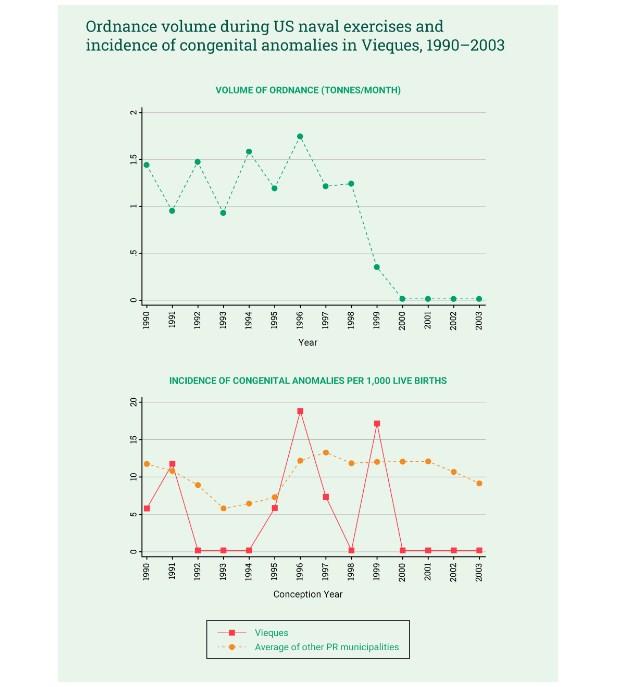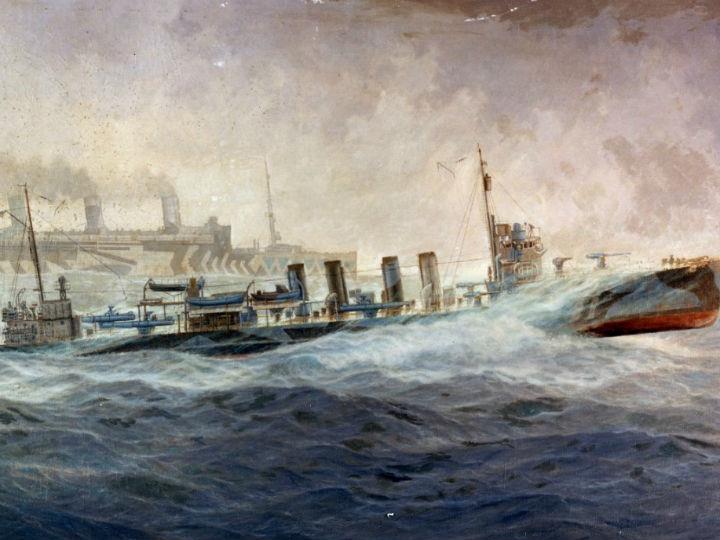by Mark Stabile*
Militaries around the world train regularly to ensure troops stay fit for combat, but for one army at least, the drills have become deadlier than the real deal. Between 2006 and 2020, accidents accounted for about 32 percent, or 5,605, of military deaths in the United States Armed Forces, twice the number killed in action. Elsewhere in the world, military training mishaps likewise make the headlines whenever they happen.
While the toll war games exacts on soldiers is well-documented and often well-publicised, less understood is their impact on people who live near military bases and training grounds. Given that armed forces continue to hold training exercises around the world, we would benefit from a better understanding of the potential impact of these practices on the physical and mental health on nearby populations.
My latest paper, “Military training exercises, pollution, and their consequences for health”, co-authored with Gustavo Bobonis and Leonardo Tovar, studies the effect of US Navy drills on the health of babies born in the Puerto Rican territory of Vieques. Bombing activity there led to short-term increases in water pollution, which has been linked to increased frequency of miscarriages and congenital anomalies. We found that the sudden end of bombing drills in July 2000 coincided with a 56 to 79 percent decrease in the incidence of congenital anomalies.
Bombing and babies
For the 60 years until 2001, Vieques, a tiny island off the eastern coast of Puerto Rico, hosted a range of US Navy exercises including ship-to-shore gunfire, air-to-ground bombing by naval aircraft, and Marine amphibious landing. Military training and operations were conducted in the eastern end of Vieques, while the western end was used to store munitions. The island’s population of about 9,300 (as of 2010) live in the centre.
US naval operations in Vieques averaged between 180 and 250 days each year over the six decades. Shelling took place on 105 of those days. Every year, an estimated 3 to 14 million pounds of live ordnance were detonated within the live impact area, which encompassed about 3.6 square kilometres – a mere 12.5 kilometres from the residential population. The US Agency for Toxic Substances and Disease Registry (ATSDR) noted that the naval training in Vieques included the handling of the chemicals napalm and Agent Orange. In addition, over 250 rounds of ammunition tipped with depleted uranium were fired in 1999. According to a report by the US Department of Defense, biological weapons were tested in Vieques, but no further details of the operation have been publicly disclosed.
In 1999, the US Navy wound down its operations in Vieques after a civilian employee’s accidental death in a bombing mishap triggered mass protests from the island’s residents. The Navy briefly resumed target practise in 2000 but only using “practice” bombs and other non-explosive ordnance. Following a 2001 referendum in which most Vieques residents voted in favour of permanently ending naval activity, all military training exercises on the island officially ceased on 1 May 2003.
Our study focused on whether the abrupt end of naval practices in July 2000 had any short-term effect on infant health. We looked at monthly data on the amount of ordnance used the training exercises. From 1985 to 1999 – the period for which complete data is available from the US Navy – between 1,359 and 2,667 tonnes of ordnance were used in training exercises, of which 124 to 469 tonnes were high explosives.
We also obtained data on more than 805,000 births in Vieques and the rest of Puerto Rico between 1990 and 2003. The data contained information such as sex, month of conception, date of birth, gestation period, detection of congenital anomalies, the mother’s age and education level as well as where she was living at the time of delivery.

We found that the sudden halt in bombing practices was associated with a 7.7 per thousand decrease in the incidence of congenital anomalies, which translates to a 77 percent reduction relative to the baseline mean. There was also a 5.5 percentage point drop in the probability of female births. The latter finding is consistent with prior evidence that suggests male foetuses are more vulnerable to detrimental influences and therefore less likely to be delivered safely.
Toxic waters and bad vibrations
Water pollution, which has been linked to increased frequency of miscarriages and congenital malformations, is an obvious channel through which the war games at Vieques might have compromised islanders’ health. Between 1985 and 1999, official quarterly tests showed that the waters surrounding the live impact area contained, on average, levels of arsenic, cyanide, lead and other inorganic chemicals beyond safe limits. We found that a one standard deviation increase in average ordnance levels led to a 0.3 of a standard deviation increase in overall short-term pollution levels.
After military drills were halted in Vieques, ATSDR, the federal agency, tested groundwater, soil, air, as well as fish and shellfish at the island. The agency concluded that islanders had not been exposed to harmful levels of chemicals resulting from US Navy training activities. However, independent research studies have documented exposure of the population to higher levels of mercury, lead, copper and nickel than those recommended by the World Health Organization.
Research by Puerto Rican government and experts have highlighted the unusually high incidence rates of cancer, cardiovascular diseases and diabetes in Vieques relative to the rest of Puerto Rico. And, in 1999, education officials reported that “vibrations caused by bombing practices shudder educational facilities, affecting the physical structure of buildings and interrupting classes”. They concluded that the noise and disruptions caused students anxiety and concern. Similar stress could have been suffered by pregnant women, who tended to be younger in Vieques compared to elsewhere in Puerto Rico, and were exposed to bombings for most of their lives. Higher prenatal stress levels have been associated with lower birth weight and premature births.
The cost of war (games)
The case of Vieques as a casualty of war games might just be one of many, considering that the US alone maintains some 800 military bases in more than 70 countries. Vieques, in other words, presents a scenario that offers more than enough reason to take the unintended impact of military drills seriously.
Our findings have important implications for both child policy and military policy. How healthy a baby is at birth will have repercussions on her education outcomes, employment and health in adulthood. If armed forces are to minimise the damage wrought by their exercises, it’s better to face up to reality than remain in denial. Just like studies about smoking eventually added up to enough evidence for governments to say, "We can’t ignore this anymore", we hope our study will add to findings on military exercises that eventually compel armed forces around the world to change how they train.
One way to reduce the impact might be to stop using live ammunition. Drills will still be stressful to those who live nearby (as well as to troops themselves), but militaries could mitigate at least some of the environmental pollution by not using live ammunition. After all, the raison d’ etre of armed forces is to defend, rather than kill.
*Professor of Economics, the Stone Chaired Professor in Wealth Inequality, and the Academic Director of the James M. and Cathleen D. Stone Centre for the Study of Wealth Inequality at INSEAD, the Deputy Academic Director of the school’s Hoffmann Global Institute for Business & Society
**first published in: knowledge.insead.edu




 By: N. Peter Kramer
By: N. Peter Kramer
